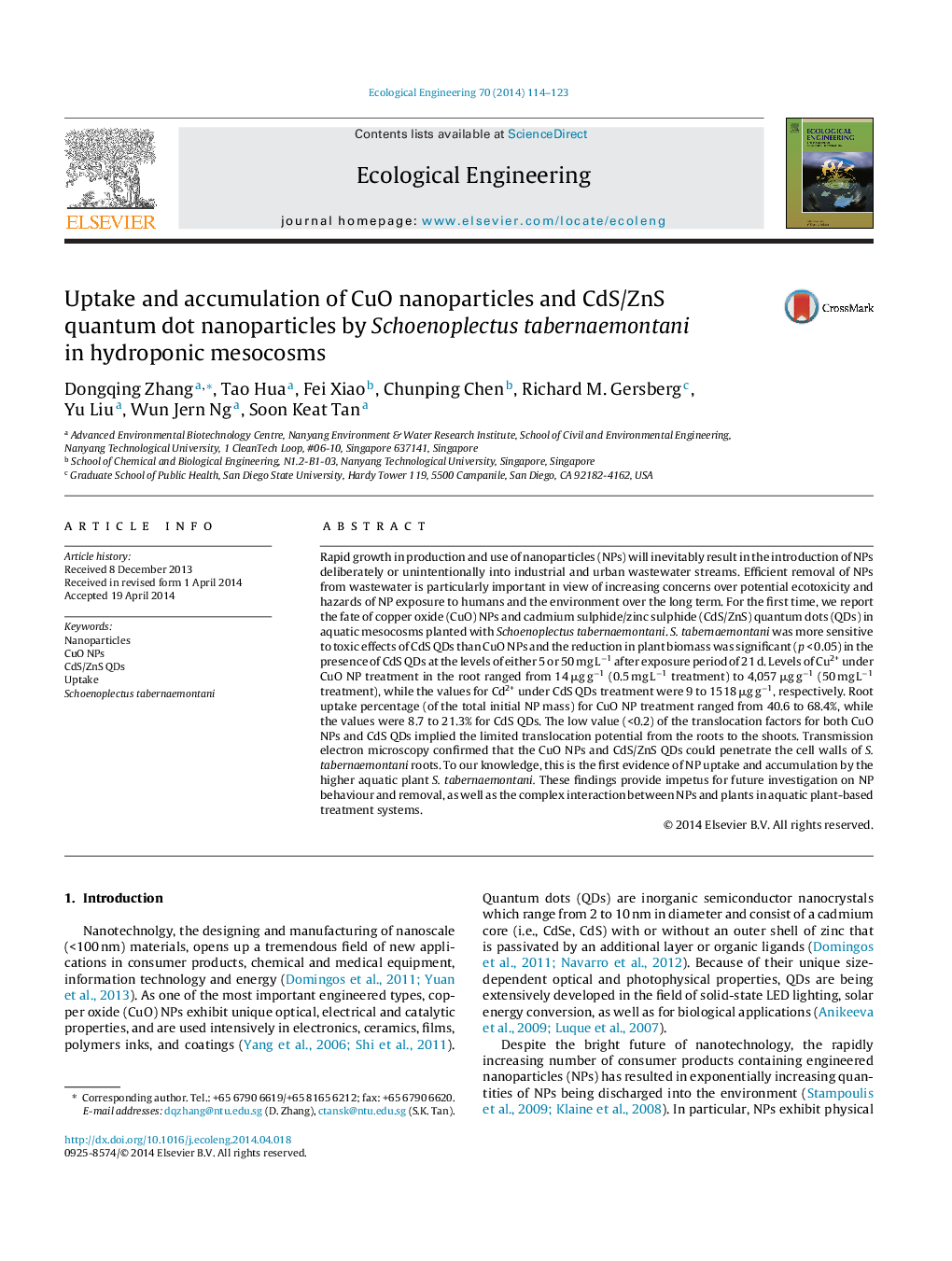| Article ID | Journal | Published Year | Pages | File Type |
|---|---|---|---|---|
| 6302115 | Ecological Engineering | 2014 | 10 Pages |
Abstract
Rapid growth in production and use of nanoparticles (NPs) will inevitably result in the introduction of NPs deliberately or unintentionally into industrial and urban wastewater streams. Efficient removal of NPs from wastewater is particularly important in view of increasing concerns over potential ecotoxicity and hazards of NP exposure to humans and the environment over the long term. For the first time, we report the fate of copper oxide (CuO) NPs and cadmium sulphide/zinc sulphide (CdS/ZnS) quantum dots (QDs) in aquatic mesocosms planted with Schoenoplectus tabernaemontani. S. tabernaemontani was more sensitive to toxic effects of CdS QDs than CuO NPs and the reduction in plant biomass was significant (p < 0.05) in the presence of CdS QDs at the levels of either 5 or 50 mg Lâ1 after exposure period of 21 d. Levels of Cu2+ under CuO NP treatment in the root ranged from 14 μg gâ1 (0.5 mg Lâ1 treatment) to 4,057 μg gâ1 (50 mg Lâ1 treatment), while the values for Cd2+ under CdS QDs treatment were 9 to 1518 μg gâ1, respectively. Root uptake percentage (of the total initial NP mass) for CuO NP treatment ranged from 40.6 to 68.4%, while the values were 8.7 to 21.3% for CdS QDs. The low value (<0.2) of the translocation factors for both CuO NPs and CdS QDs implied the limited translocation potential from the roots to the shoots. Transmission electron microscopy confirmed that the CuO NPs and CdS/ZnS QDs could penetrate the cell walls of S. tabernaemontani roots. To our knowledge, this is the first evidence of NP uptake and accumulation by the higher aquatic plant S. tabernaemontani. These findings provide impetus for future investigation on NP behaviour and removal, as well as the complex interaction between NPs and plants in aquatic plant-based treatment systems.
Related Topics
Life Sciences
Agricultural and Biological Sciences
Ecology, Evolution, Behavior and Systematics
Authors
Dongqing Zhang, Tao Hua, Fei Xiao, Chunping Chen, Richard M. Gersberg, Yu Liu, Wun Jern Ng, Soon Keat Tan,
